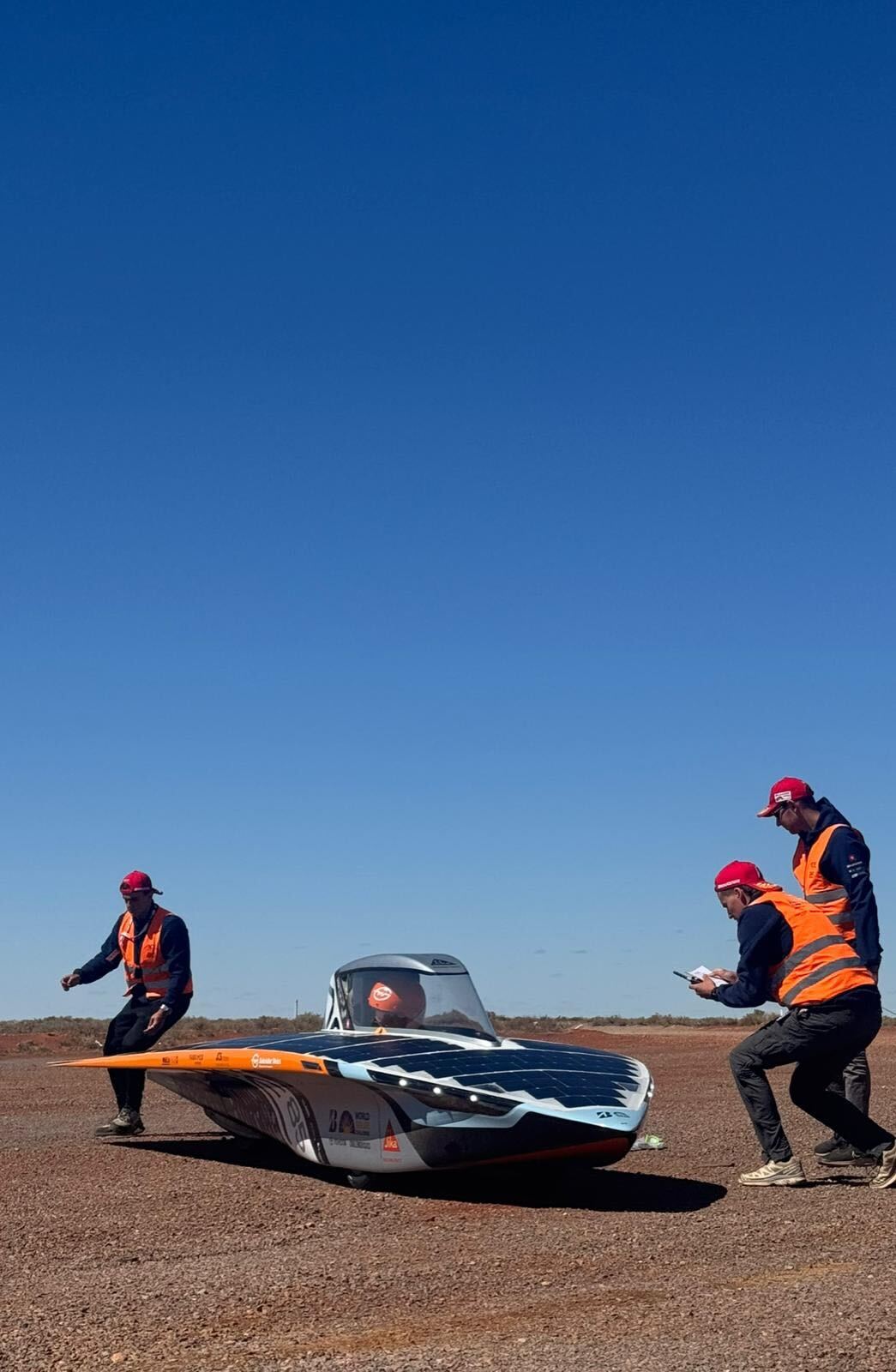
ACENTAURI
SOLAR RACING
SWITZERLAND IS BACK




aCentauri Solar Racing’s mission is to inspire and educate students and the broader public about the power of sustainable technology in the field of mobility.
Our project involves designing, building and testing a solar car to drive 3'000 km through Australia in the Bridgestone World Solar Challenge, competing against top teams from universities around the world.
We aim to leave a sustainable impact on Swiss students and partners, representing ETH Zurich and Switzerland as the engineering and innovative powerhouses they are. Let’s aCe!
Are you ready for the new generation of our aCentauri Solar Car? Over the past few months the team has been busy building the new car.
With lots of new ideas and innovations flowing into the new car, we are sure to aCe the race.





























The Bridgestone World Solar Challenge is a biennial event that brings together innovators from around the world to race solar-powered cars across the Australian outback. The event is not only a thrilling race, but also a platform for showcasing the latest advancements in sustainable mobility.
From solar panels to aerodynamic designs, the participating teams employ various technologies to maximize their car's performance and efficiency.
The race covers over 3000 km of challenging terrain, providing a real-world test for the solar cars and their teams. The event attracts teams from top universities, research institutes, and corporations, all with a common goal of promoting clean energy and sustainable transportation.


The cuts for our t-shirts and hoodies are custom-developed. Our designs combine style with sustainability, resulting in clothing that represents not just our team, but everyone who believes in aCentauri and its vision.
Support our team by buying our limited stock 2025 merchandise collection - designed for our new car Silvretta.









Our team of future engineers brings together diverse backgrounds and perspectives, fostering a dynamic environment where creativity thrives. Driven by motivation and shared goals, we are committed to pushing the boundaries of what's possible in engineering and shaping the future of mobility.
We’re dedicated to building the future of mobility, constantly pushing the limits of engineering through collaborative and groundbreaking work. Together, we strive to redefine what’s possible, bringing bold ideas and advanced technologies to life.
Our mission is to inspire students and industry leaders alike, cultivating a culture of continuous learning and knowledge-building in engineering. By developing valuable expertise, we prepare future engineers and empower the next generation of innovators and skilled employees.
We’re committed to aligning our work with Sustainable Development Goals (SDGs 4, 7, and 9), advancing sustainable technologies that benefit both people and the planet. By showcasing how innovation can drive positive change, we aim to contribute to a cleaner, more sustainable world through technological solutions.




